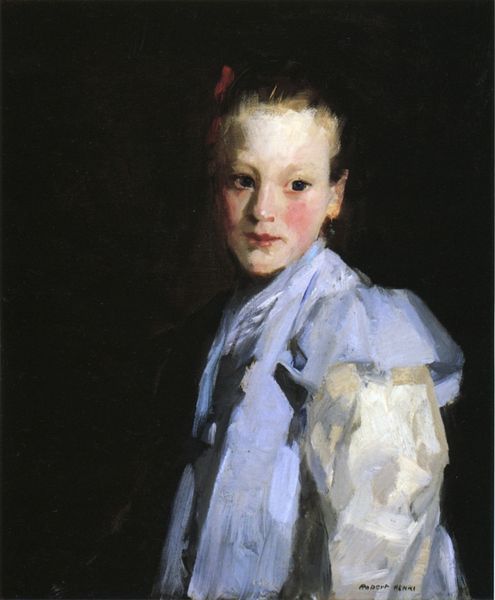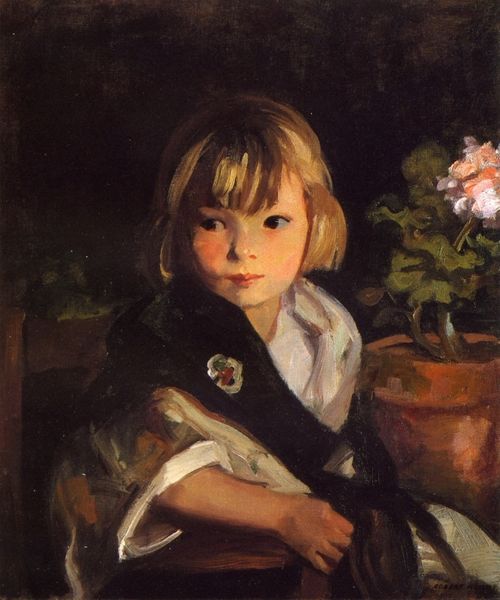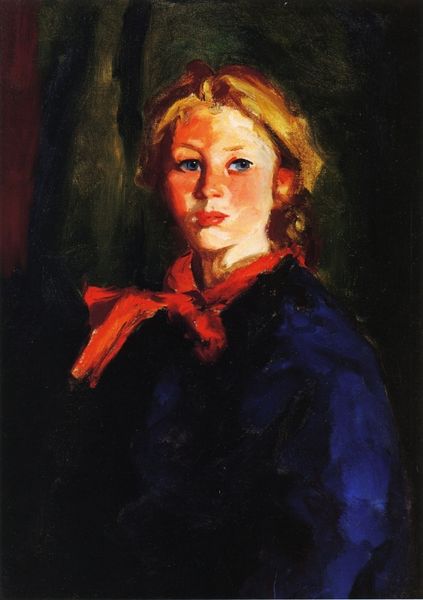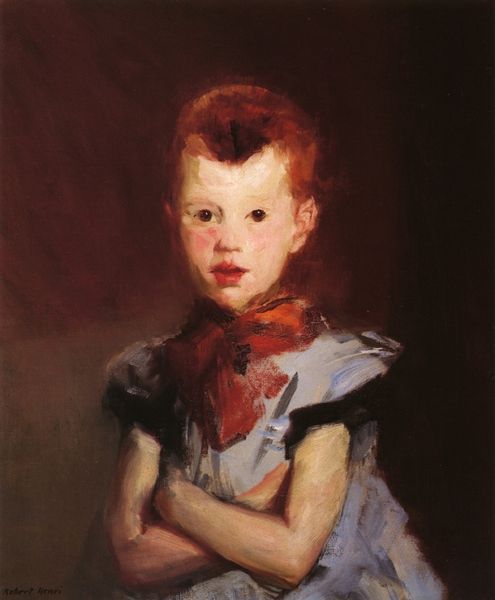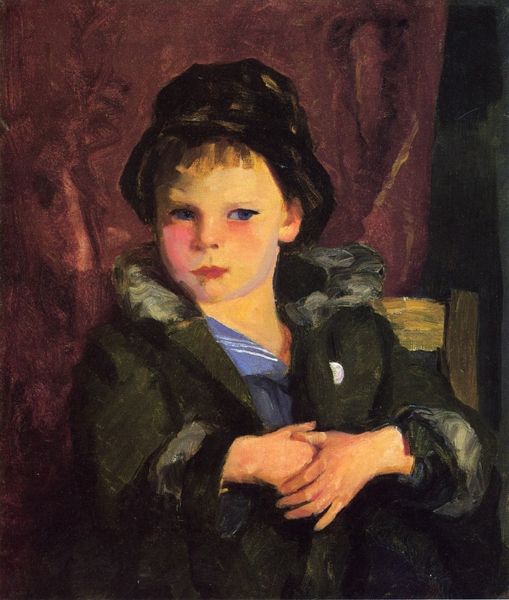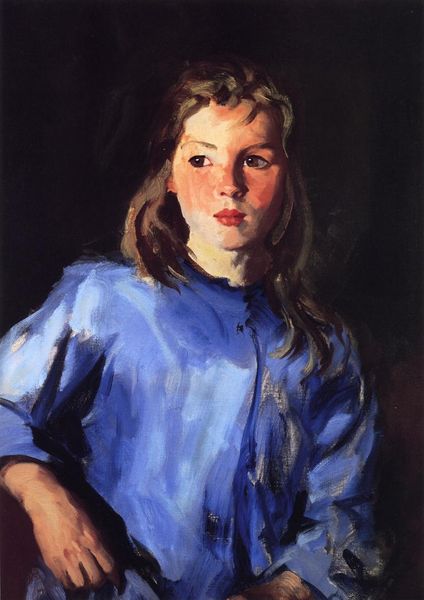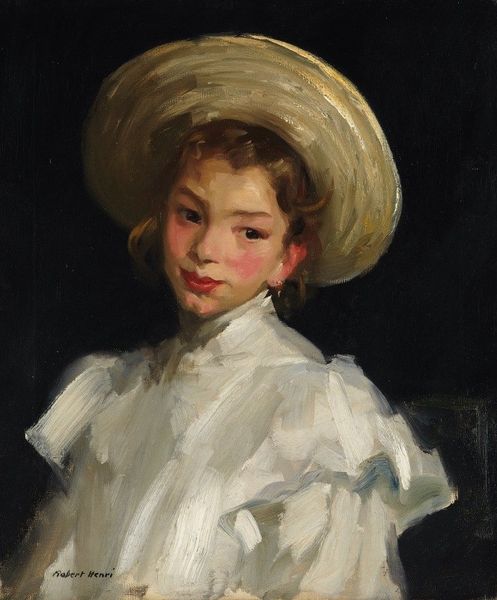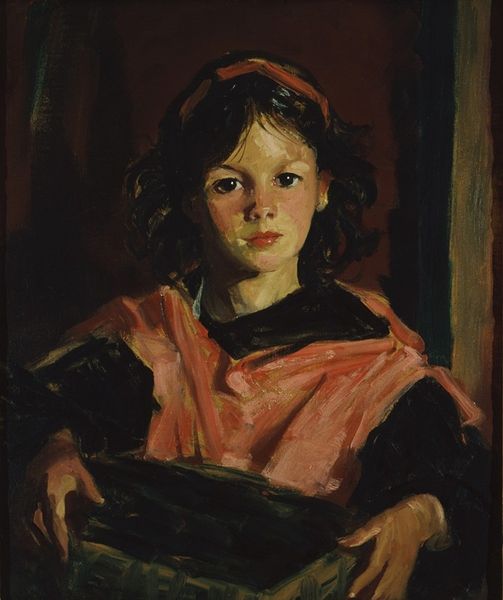
painting, oil-paint, impasto
#
portrait
#
painting
#
oil-paint
#
figuration
#
impasto
#
ashcan-school
#
modernism
#
realism
Copyright: Public domain
Curator: What a captivating portrait. Robert Henri painted "Sis" in 1913. Editor: The oil paint is applied with such thick impasto; you can really see the energy of each brushstroke. She almost feels like she could step right out of the canvas! Curator: Absolutely, and it’s vital to remember Henri’s role in the Ashcan School movement. He pushed against academic traditions and championed everyday subjects like this girl. These artists sought to depict life as it was, with all its grit. Editor: I'm drawn to the material reality here – look at how the pink smock almost merges with the light. You can see how he builds the form from raw pigment. Was the dress bought at a local garment factory or crafted by her mother, and how does it connect to notions of labor and value? Curator: Precisely, these were conscious decisions within the social context of early 20th century America. Henri sought a radical democratic spirit for his art to reach beyond established elite institutions and resonate with a broader audience. His subject embodies modernism and realism as opposed to established academic portraiture styles. Editor: The child looks forward with blue eyes framed by her pale skin tone that merges slightly with the cream/pink of her dress and fair blondish hair, which are juxtaposed againist a deep nearly black backdrop. This isn't about idealizing childhood beauty, right? The girl seems very average but well represented by a new kind of American vision and artistic value. Curator: Indeed, there is an unaffected gaze to this "Sis" figure. Henri isn't idealizing anything; instead, he immortalizes a fleeting moment with remarkable fidelity while capturing the spirit and the changing social conditions. He gives artistic importance to this everyday subject. Editor: Considering Henri’s approach and the artwork's physicality really emphasizes how painting acts as a form of cultural production. By presenting it in this way he really challenges those artistic ideals to think about something so new! Curator: Viewing “Sis” offers such a remarkable study into Henri’s revolutionary view that elevated real life while challenging entrenched ideals about portraiture and the role art might serve. Editor: Looking at the canvas again, this brings back that central question, how this artwork was built as a means of material making. It is important when looking at his broader project, for sure!
Comments
No comments
Be the first to comment and join the conversation on the ultimate creative platform.
